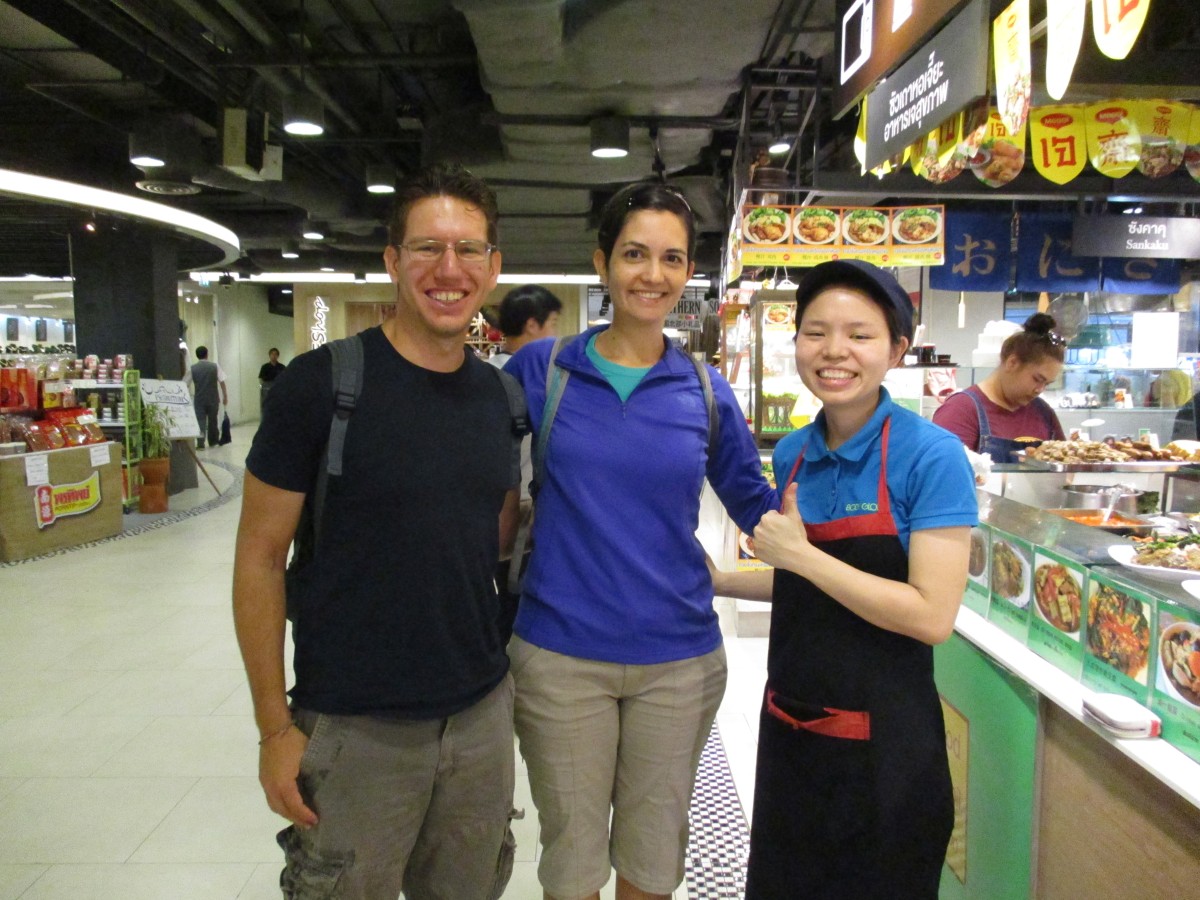I am someone who’s always loved Thai food, and I can’t even count the number of Thai restaurants I’ve been to in the US. As much as I’ve loved the food in Thailand, strangely, it’s often not necessarily better than what I’ve had at home–that’s not an insult to local Thai cuisine, but rather, a compliment to the Thai cuisine in the US. Thai restaurants I’ve been to in the US always have an assortment of soups, noodle dishes, curries, stir fries, salads, etc., but the one thing I don’t ever remember seeing is khao soi. After being in Chiang Mai for quite some time and getting to try a variety of options, this dish has become one of my absolute favorites.
Khao soi is a Northern specialty soup that consists of a yellow coconut curry broth, flat egg noodles and a variety of garnishes (any mix of fried noodles, shallots, cilantro, green onion, lime, fresh chili and pickled vegetables). The meat version is usually served with meatballs, and the vegetarian versions can have anything from meat substitutes to tofu and all sorts of vegetables.
For some quick further background, Chiang Mai is a vegetarian’s paradise. To give you an idea, I’m pretty sure I could eat at a different dedicated vegetarian restaurant for every meal for weeks and still not try them all. That’s why I’m not doing a survey of vegetarian restaurants in general; it’s just far too overwhelming. So instead, I decided to try as many different vegetarian versions of khao soi as I could during our time there. Some I tried after deciding to write this blog post, and some I tried before that, so I didn’t get photos or detailed information about all of them. Anyway, here goes!
These are listed in no particular order, and prices are approximate because I didn’t always remember to write them down. (30 baht = $1)
Morning Glory

34 Prapokklao Rd. (Near Chiang Mai Gate)
The first thing I noticed about this dish was that it seemed somewhat small, and there was very little broth. The broth itself was pretty spicy but not super flavorful otherwise. The crispy noodles on top were quite good, obviously house-made. Not my favorite but still good. (60 baht)
Bamboo Bee
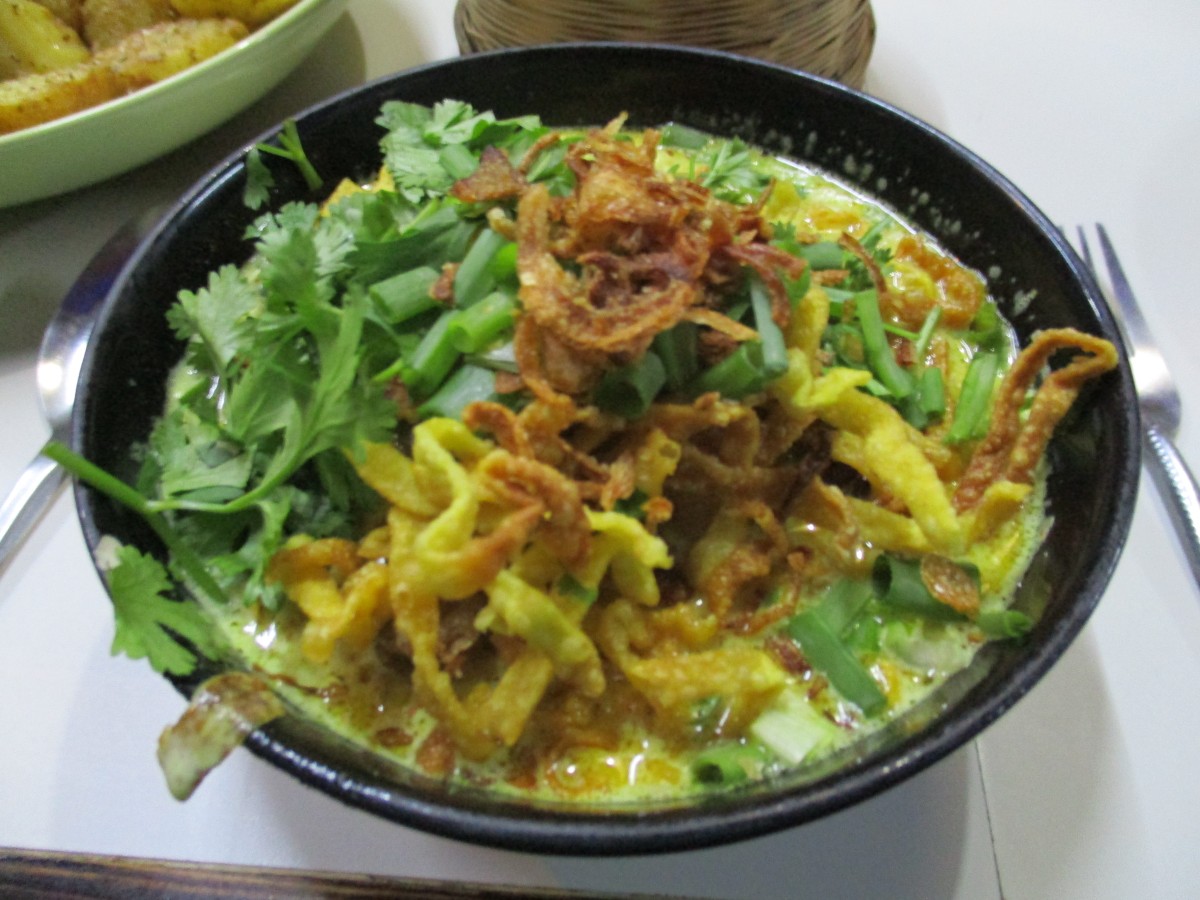
This one was piled high with fresh-looking garnishes (cilantro, green onion and fried shallots), so I knew I was going to like it. It had a generous amount of broth which wasn’t spicy but was very flavorful. The broth was actually almost over seasoned, as if they’d used a bit too much curry paste, but was still very delicious. This one included some fake meat and broth but no vegetables. One of my favorites. (90 baht)
Bird’s Nest Cafe
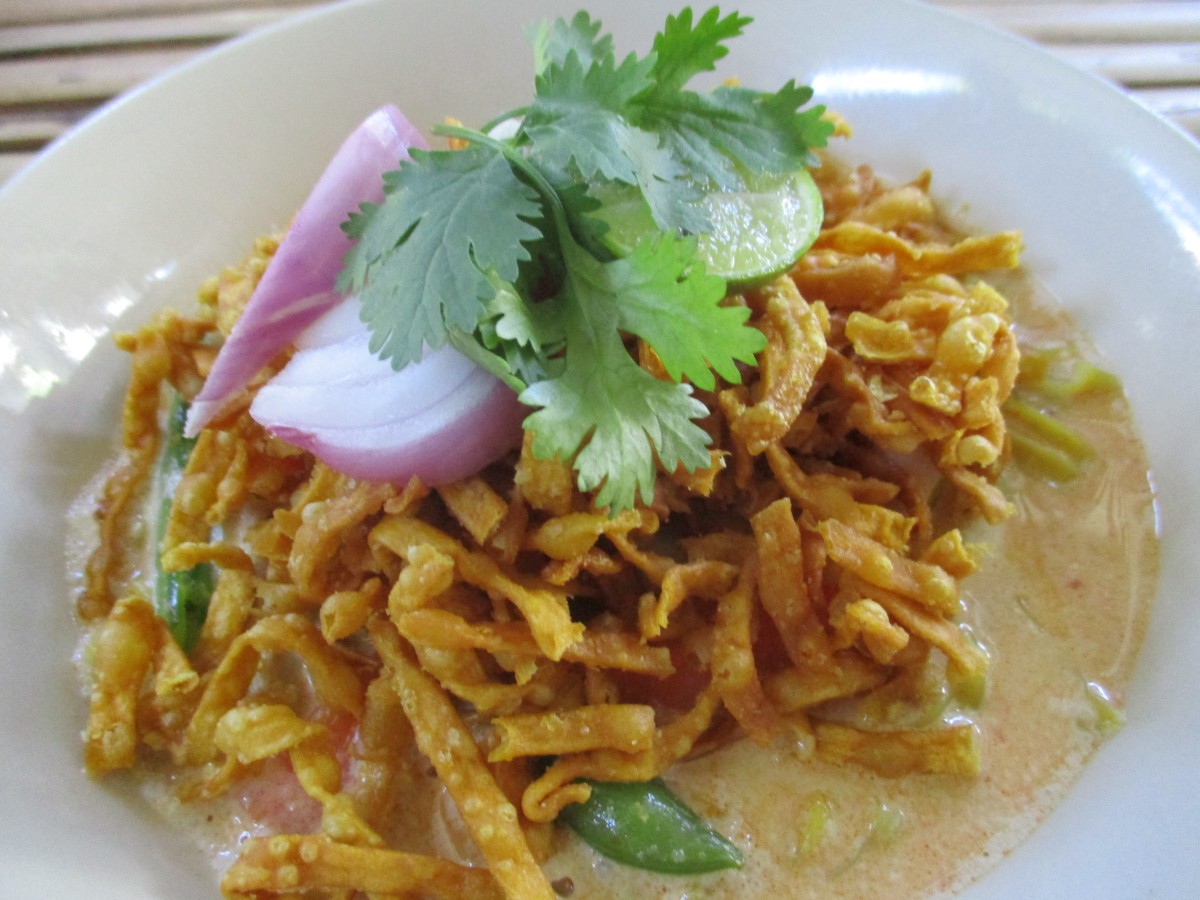
Sinharat Lane Soi 3 (near northwest corner of the Old City)
Luckily, I actually ordered this one by accident the first time because it’s not listed as khao soi on the menu. This was probably one of the largest portions I sampled and also one of the creamiest. It had a light, delicious flavor and some vegetables. Garnishes were shallot, cilantro and lime. Another favorite. This one was also particularly special because it was shared with several friends, a great accompaniment for tying on friendship bracelets! (85 baht)
Free Bird Cafe
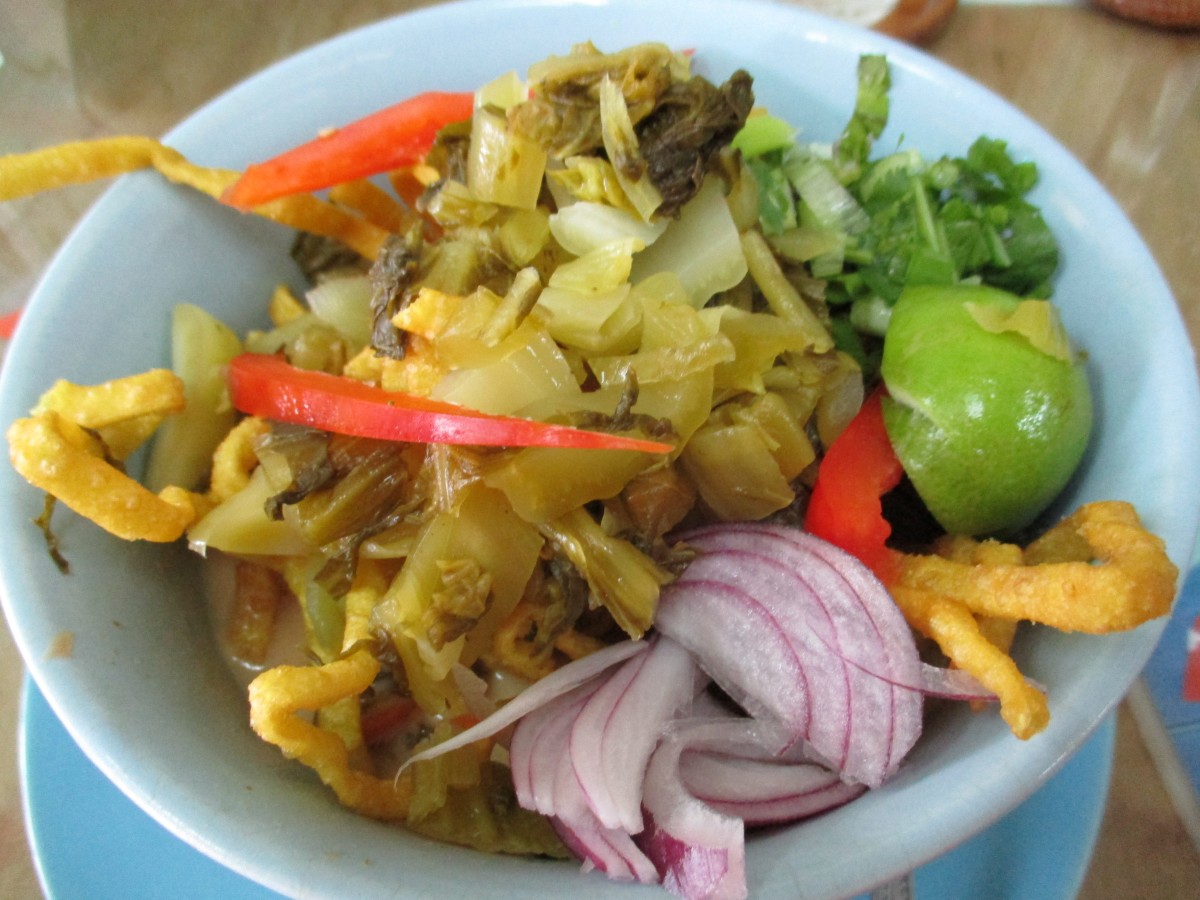
116 Maneenoparat Rd. (just outside the Old City, to the northeast)
This one definitely took the cake for the greatest quantity of garnishes, which included red pepper, pickled vegetables, purple onion, cilantro, lime, cilantro and house fried noodles. I would actually venture to say that this was more a bowl of garnishes with a few noodles, broth, potatoes and carrots at the bottom. It was actually almost hard to eat because of all the garnishes. The thin creamy broth had a kick and was very flavorful. (90 baht)
Free Bird Cafe supports Thai Freedom House, a non-government, not-for-profit, language and arts community learning center in Northern Thailand dedicated to assisting families and individuals who are refugees from Burma and members of minority groups of Thailand.
Aum
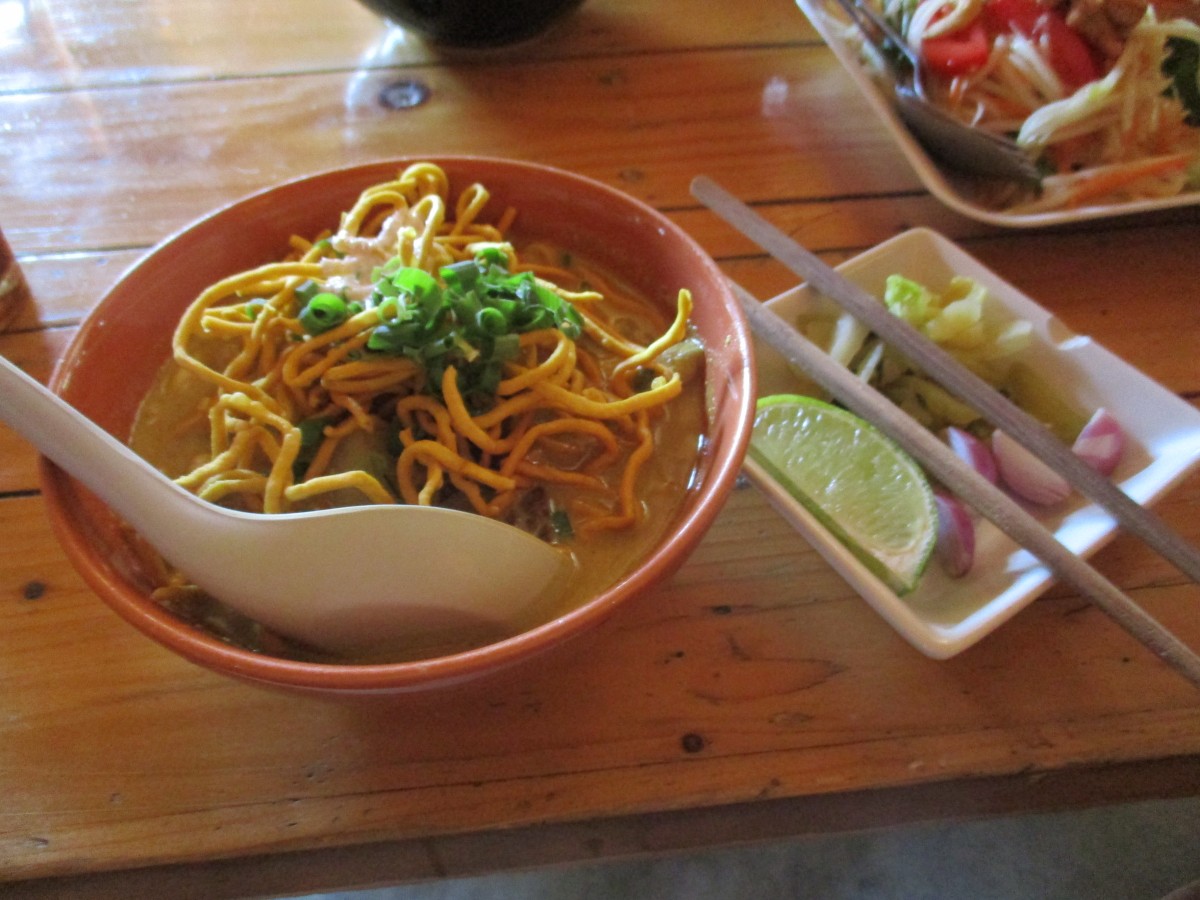
319 Moon Mueang Rd. (near Tha Phae Gate)
Aum’s khao soi has been voted the best in Chiang Mai. Frank said it was his favorite, and I liked it a lot as well. The broth was very flavorful and slightly sweet with medium creaminess. It included baked tofu, potatoes and mushrooms. The top was garnished with green onion and coconut cream. Garnishes served on the side were lime, shallot and pickled vegetables. (70 baht)
Angel’s Secrets
27 5, Moon Muang Rd. Soi 9 (east side of the Old City)
I tasted this one before I started the research for this blog post, so I don’t have any detailed information about it. It included vegetables in addition to the typical ingredients, and it was delicious.
Blue Diamond
35/1 Moon Muang Road, Soi 9 (northeast corner of the Old City)
Many people rave about Blue Diamond’s vegan baked goods and nice patio atmosphere, but most say that the food is just ok. I would mostly agree with that. The khao soi was decent but not super memorable, but it did include lots of vegetables and tofu. The broth was somewhat thin but had a decent flavor, especially after I asked for a lime wedge.
K’s Kitchen
3/1 Ratchaphuek (across from Kad Suan Kaew Mall)
I’m grateful that a friend recommended this place because it’s quite hidden and I never would have found it otherwise. Their vegetarian version of khao soi is the pumpkin khao soi. It had a relatively thin broth which was somehow also nicely creamy. It has a complex, slightly spicy, slightly sweet flavor. Vegetables included were carrots, green beans and pumpkin. Red chili, green onion and cilantro garnished the top, and served on the side were pickled vegetables, shallot and lime. My only complaint was that it was a slightly small portion, but I guess at that price, you can order 2! Another favorite. (55 baht)
Kanlaya
27/2 Mun Mueang Road, Soi 9 (northeast corner of the Old City)
I tried this one all the way back in August and almost forgot to include it. Unfortunately, I don’t remember anything specific about it, but I remember enjoying it. I’m pretty sure it was the first one I ever had, so it must’ve been good for me to want to try so many!
Maya Food Court, Vegetarian Food Stand
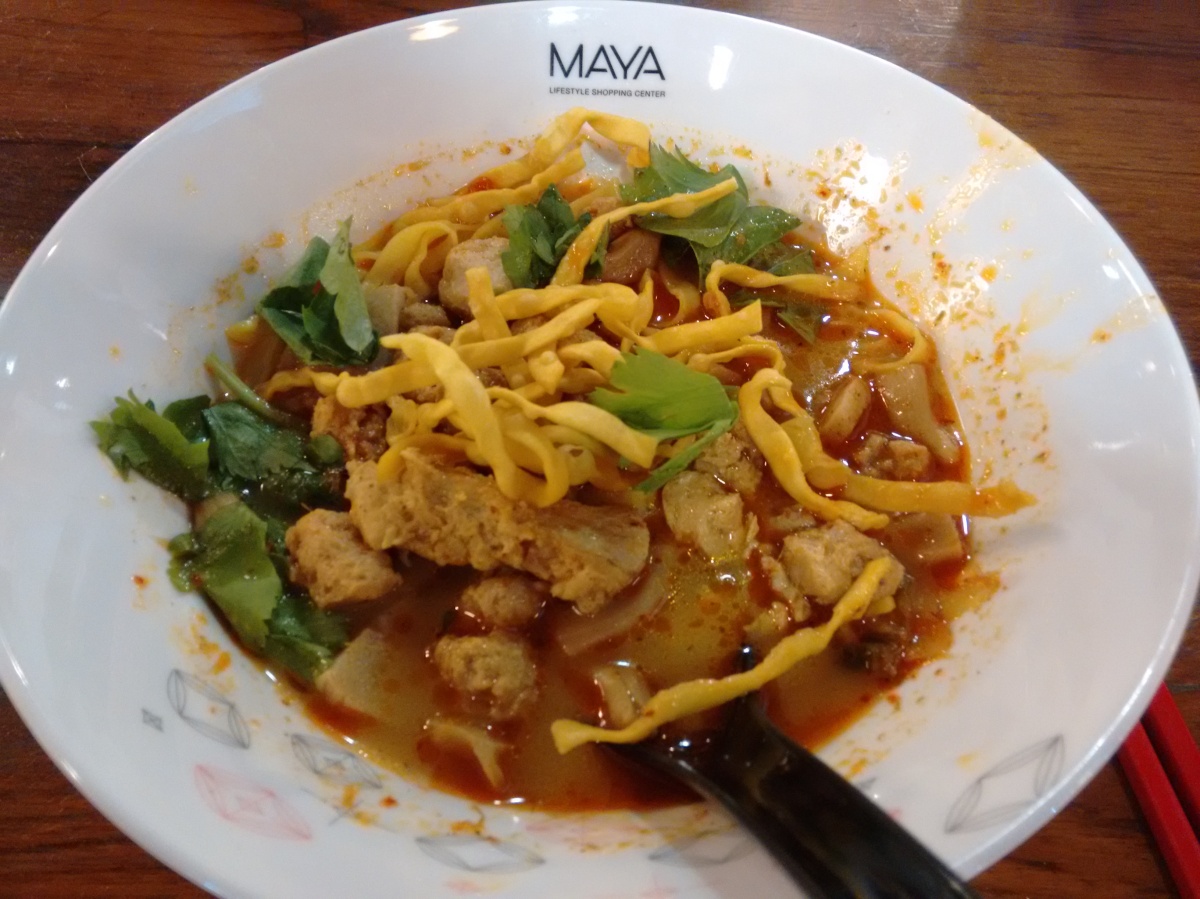
Thanon Charoen Mueang (northwest corner of Huay Kaew and Nimmanhaemin Roads)
B1 level of Maya Mall, near the glass elevator
This one was probably the most authentic, which meant that it was less creamy than others but also more savory and spicy. It was a large portion that included mushrooms, several kinds of fake meat and was garnished with celery leaves. (40 baht)
I decided to include this one last, not because it was necessarily my favorite (it was very tasty though), but because of the relationship I had with the cook, Mile (pronounced more like Mai). Frank and I visited this vegetarian stand at the Maya food court almost daily for lunch for quite a while, and we developed a relationship with the family who runs it. The mother, son and daughter who run the place are always cheerful with genuine smiles on their faces. Mile always called me “Bonnieeee!” and she called Frank “Bonnie husband.” Seriously, we loved them. After the brother’s wedding one weekend, they gave us a special cake they’d saved for us from the wedding. It’s supposed to bring good luck to couples who eat it together.
Anyway, if you go to Chiang Mai and you’re a vegetarian (or you like vegetarian food), you have to visit them; they’re very popular. They have probably 20 delicious dishes available every day, all vegan, and you can add a fried egg on top if you want. These include vegetarian versions of many northern Thai specialties, such as lemongrass-y sausage and a chili tomato dish that’s just delicious. Everything tastes fresh, and if it’s not hot enough for your taste, they’ll pop it in the microwave for you. Rice and one item costs 30 baht, and each additional item costs 10 baht more. And just remember, 30 baht equals $1–it’s really impressive.
